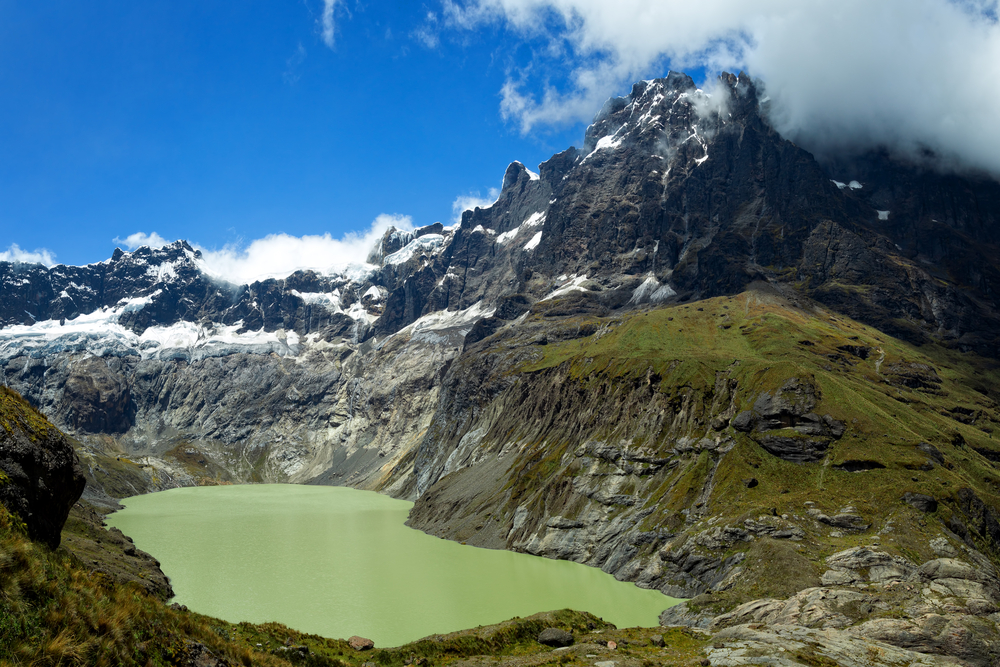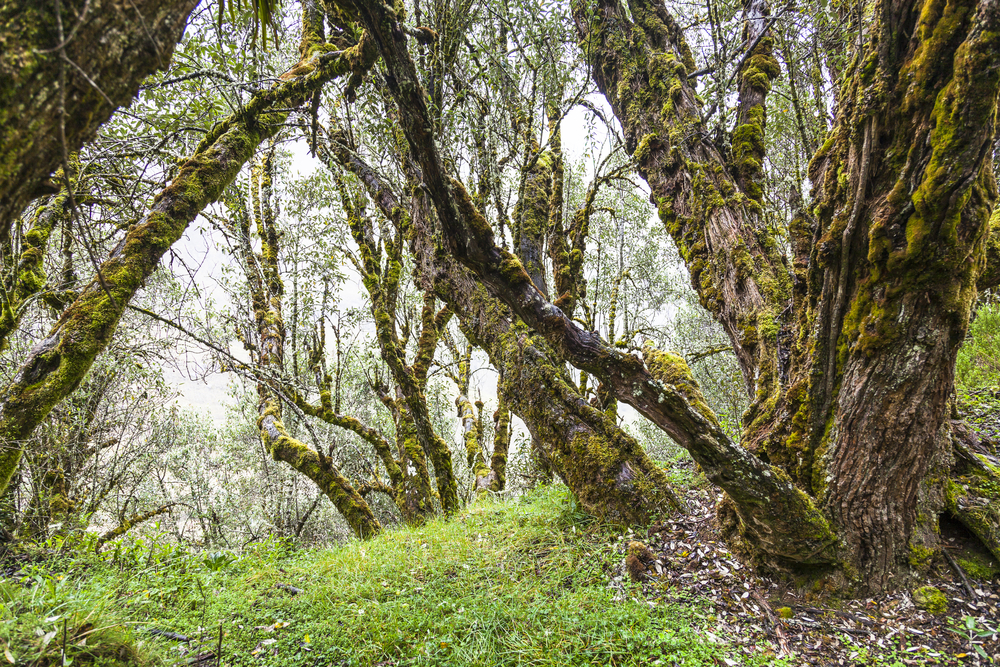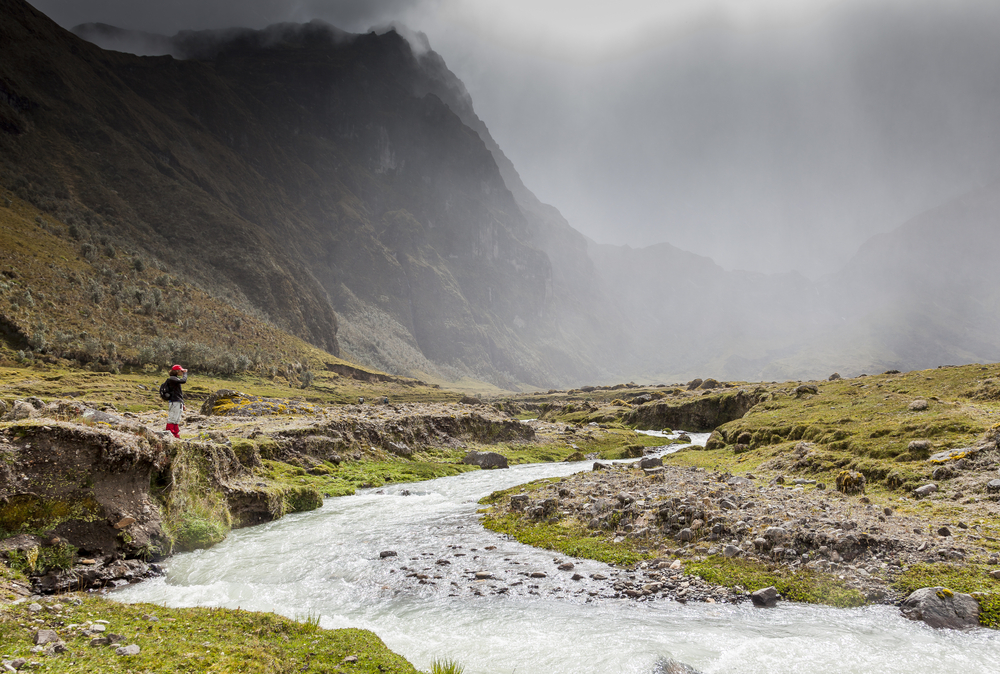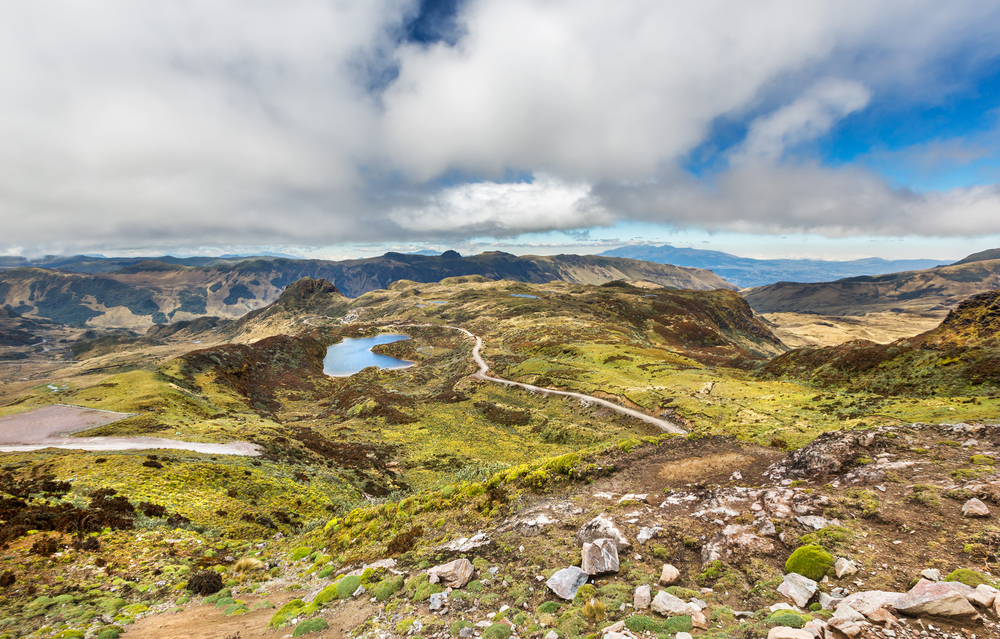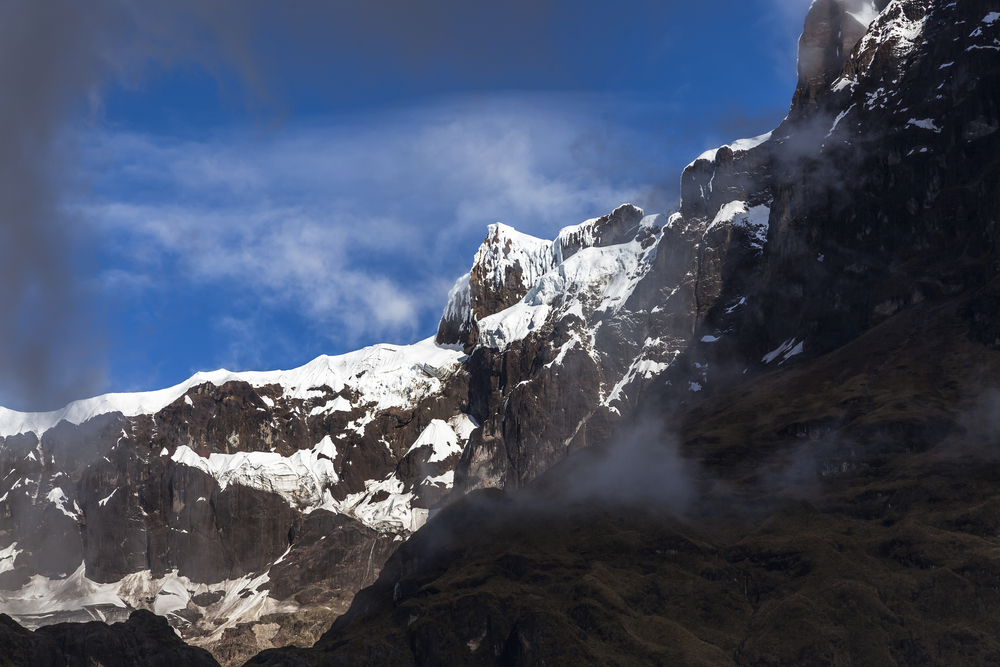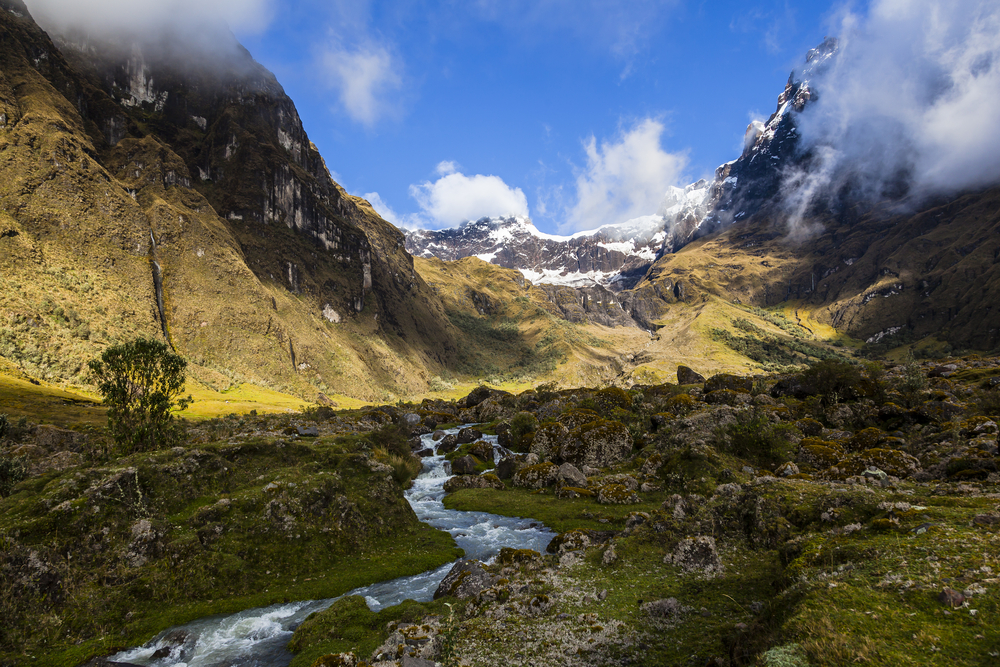Sangay National Park is located in the central part of Ecuador on the Andes mountains’ eastern side. The park covers an area of just under 2,000 square miles (5,178 sq km), making it the third-largest protected area in the country.
Like much of the country, the national park represents a vast diversity of ecosystems and wildlife. The vegetation and habitats vary by elevation and location within the park’s boundaries. There are over 3,000 species of vegetation blanketing the rugged landscape created by the Andes.
The park comprises tropical rainforests, cloud forests, montane forests, mountains, valleys, grasslands, wetlands, and even glaciers. The Andes mountain range is at the heart of the national park, which features the extinct El Altar volcano and two active volcanoes known as Sangay and Tungurahua.
There are more than 320 lagoons scattered across the park’s mountainous region. The park’s elevations range from 2,952 feet (900 m) to 17,450 feet (5,319 m) above sea level. These elevation and terrain changes give way to a richly biodiverse region.
The various ecosystems of dense forests and thick vegetation serve as tremendous habitats for various unique wildlife. Some of the most popular animal predators include the jaguar, ocelot, cougar, paramo wolf, and pampas cat. Other hopeful wildlife sightings include Brazilian tapir, mountain tapir, margay, spider monkey, red brocket deer, Northern pudu, anteaters, spectacled bear, and the white-tailed deer.
Photos
Things to See
Things To Do
Sangay National Park Trails
Hiking in the park is a popular activity; however, it does come with challenges due to the altitude and elevation changes. That said, there are still shorter and easier trails engaged by those not interested in the ascents.
Park Protection
Sangay National Park was created to protect a rich and diverse ecosystem comprised of amazing flora and fauna. The park also protects the vulnerable mountain tapir and spectacled bear species from extinction within the country.
The park is highly invested in the mountain tapir, which is successfully living within the park’s borders. The other wildlife in the park falls under the same protection, which prevents it from moving into vulnerable and endangered status.
Because of the importance the park plays in the survival of many species, UNESCO has declared it a World Heritage Site.
Sources
- Anywhere, Sangay National Park, https://www.anywhere.com/ecuador/attractions/sangay-national-park-national-park, Retrieved October 2020.
- Britannica, Sangay, https://www.britannica.com/place/Sangay, retrieved October 2020.
- Britannica, Tungurahua, https://www.britannica.com/place/Tungurahua, retrieved October 2020.
- Ecuador, Sangay National Park, Protected Areas, Tourist Attractions, https://www.ecuador.com/attractions/protected-areas/sangay-national-park/, retrieved October 2020.
- This is Ecuador, Sangay National Park, https://www.thisisecuador.com/blog/discover-sangay-national-park/, retrieved October 2020.
- UNESCO, Sangay National Park, https://whc.unesco.org/en/list/260/, retrieved October 2020.
- World Heritage Site, Sangay National Park, https://www.worldheritagesite.org/list/Sangay+National+Park, retrieved October 2020.
